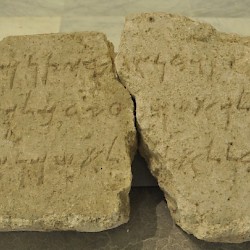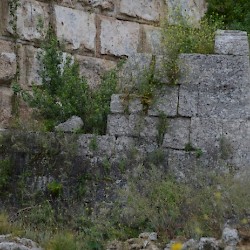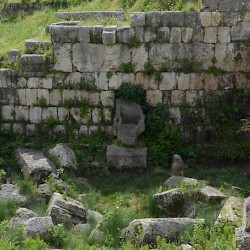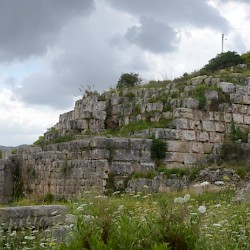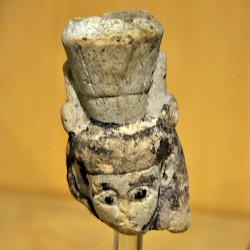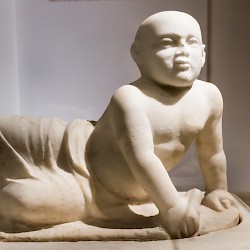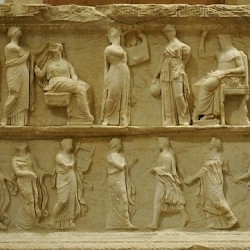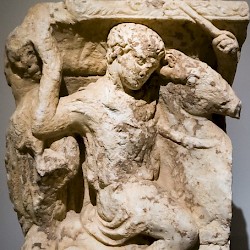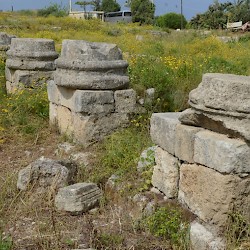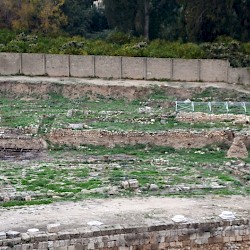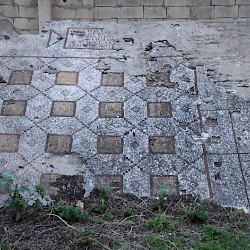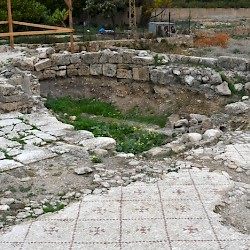Bustan esh-Sheikh
Bustan esh-Sheikh: sanctuary, dedicated to Eshmun, near Sidon. The Greeks called it "the grove of Asclepius".
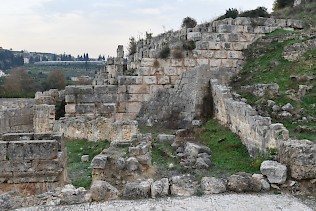
Situated just three kilometers north of Sidon, on the south bank of the river Bostrenus (modern Nahr al-Awali), the temple of the healing god Eshmun was the main sanctuary of this famous Phoenician city. The oldest parts date back to the last years of the seventh century BCE and was built by a king who may have wanted to stress Sidon's independence after the demise of the Assyrian Empire. There are some Babylonian remains from the sixth century, but the main part, a large terrace, was built by king Eshmunazar in the Persian age (c.539-c332 BCE), when Sidon was one of the main centers of Achaemenid rule.
Greek artists were already working in the temple of Sidon's tutelary deity before the conquests of Alexander the Great (r.336-323). An example is the splendid tribune, made in about 350 BCE, with a relief of Apollo (father of Asclepius = Eshmun), several other gods, and a chorus of dancers. Other remarkable pieces of art are the "temple boys", ex voto statues of babies who were put under divine protection.
In the Hellenistic period, subsidiary buildings were added to the sanctuary. According to Strabo, the Greeks called this sanctuary "the grove of Asclepius".note The "throne of Astarte" dates to this age. The Romans expanded the sanctuary with a nymphaeum, an inn, and a colonnaded street. In the Byzantine age, a church was added.
